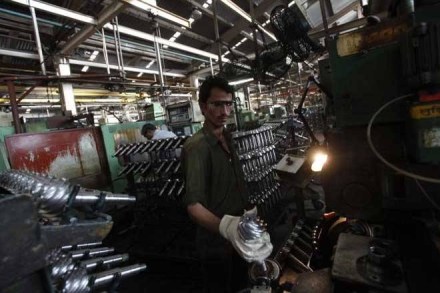Technological advances in manufacturing have resulted in three industrial revolutions, hugely benefiting customers through new, meaningful and quality products, while improving efficiencies and profitability of manufacturing companies. We are now in the midst of the fourth industrial revolution, which is driven by advances in computing, connectivity, robotics and Artificial Intelligence. It is in this context that we shall explore the shifts that are taking place in customers, operations and people.
Customers: Manufacturers are transforming to provide experiences rather than products or services. Additive manufacturing is allowing manufacturers to supply individually customised products when wanted, where wanted. Customers can be involved in the design of products.
Operations: The Industrial Internet of Things (IIoT) is becoming increasingly feasible due to the halving of sensor costs supported by a similar drop in networking and data processing costs. Event-based models, built based on real-time data on multiple parameters collected from sensors, can predict failure in equipment and provide early warning. Better control and optimisation of manufacturing processes ensure lower costs through better energy efficiencies and yields. Management can take informed decisions because of IT systems that are able to analyse Big Data, draw insights and relay these insights visually. While availability and productivity improve, costs are optimised.
People: Wearables can monitor health and fatigue levels of shop-floor personnel, improve scheduling of tasks and ensure right allocation of skilled labour. Smart helmets can detect possible hazards and safety risks, and prevent accidents. Augmented reality (AR) and virtual reality (VR) can help build skills and capabilities on the shop-floor, and provide inputs in real time. Robots are assisting humans by taking away the tedium of menial repetitive tasks as well as working in adverse environments.
The challenges to tech-enabled manufacturing: While these advances are exciting and enhance the competitiveness of the manufacturing sector, there are key challenges that can come in the way.
* Technology enablement is seen as a devourer of jobs. Robots are seen as replacement of people and improvement in manufacturing processes as a means of making people redundant.
* Manufacturing organisations are developing technology-enabled solutions to improve efficiencies and solve problems. While this is commendable, many of these are point solutions and do not allow organisations to harness the full potential.
* Technology enablement is advancing at a tremendous rate. New ideas and apps are being developed by start-ups, forums, research organisations and universities. It is important for manufacturers to keep abreast of developments and adopt new technologies to stay competitive.
So, what can organisations do to stay competitive?
* Build the right mindset and skills: New roles are emerging, such as data scientist, to provide insights to decision makers or automation engineers to automate shop-floors. Robots, in many cases, only assist and complement human effort, and don’t completely replace it. It is important, therefore, to re-skill people and help them fit into new roles. Organisations can create ‘innovation labs’, a means for people to explore new technologies, ideate and implement ideas.
* Formulate a strategy for technology enablement: It is important for organisations to look at businesses holistically and develop a strategy in line with business goals and strategy. There is no set methodology today for technology enablement, but any technology enablement has to take the organisation closer to its long-term goals.
* Build an ecosystem of technology providers: Manufacturing organisations need not reinvent the proverbial wheel, but can work closely with specialist technology enablement. Organisations can create a ‘technology sourcing cell’, which can continuously keep track of advancements that are relevant and build partnerships to deploy these technologies.
The technology enablement revolution in manufacturing has just begun. While the impact is already visible, the best is yet to come.
By Shridhar Kamath, Partner, Deloitte India
